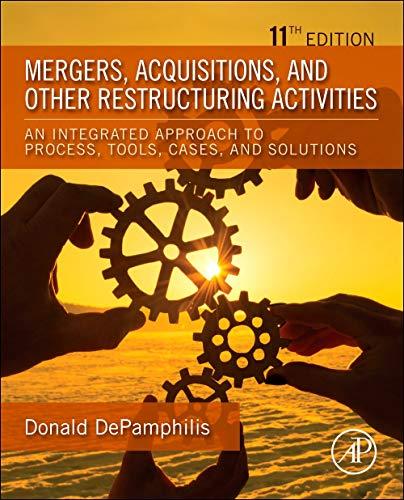
To be an Entrepreneur or to be an Employee The Case of Susan Jones* - Susan Jones has a job as a pharmacist earning $45,000 per year, and she is deciding whether to take another job as the manager of another pharmacy for $55,000 per year or to purchase a pharmacy that generates revenue of $350,000 per year. To purchase the pharmacy, Susan would have to use her $20,000 savings and borrow another $90,000 at an interest rate of 8 percent per year. The pharmacy that Susan is contemplating purchasing has additional expenses of $100,000 for prescription non-prescription drugs and lines of women's and men's personal hygiene products and cosmetics, $45,000 for one full time person and $20,000 for one part time person, $12,000 for rent and $2500 for electricity and $1300 for natural gas, $1200 for telecommunications and. Depreciation and amortization expenses are $5500. Assume that income and business taxes are 35% and the repayment of the principal of the loan does not start before three years. Also assume that revenue is expected to grow at 5% per year and expenses at 3% per year over the three years. Also assume that the interest rate on a 3-year U.S. Treasury bond is 3%. (a) What would be the business and economic profit if Susan purchases the pharmacy? (b) Suppose that Susan expects to sell the pharmacy at the end of three years for $50,000 more than the price she paid for it and that she requires a 12 percent return on his investment. Should she still purchase the pharmacy? Analytical Steps: 1. Build a pro forma (forecasted) income statement for 2011, 2012, and 2013 from an accounting approach and determine the expected profit. 2. Build a pro forma (forecasted) income from a economic approach for the same period and determine the expected EVA. 3. Determine the net present value of the stream of profits, i.e., discounted profits in year 1, year 2, year 3 less the cost of the deal. 4. Suppose that Susan expects that another pharmacy will open nearby at the end of three years and that this will drive the economic profit of her pharmacy to zero. What will be the revenue of the pharmacy in the fourth year for the new owner? 5. Should Susan purchase the pharmacy and sell it at the end of the third year? 6. What are the key risk assumptions and what do you think potential buyers will think of the risks? To be an Entrepreneur or to be an Employee The Case of Susan Jones* - Susan Jones has a job as a pharmacist earning $45,000 per year, and she is deciding whether to take another job as the manager of another pharmacy for $55,000 per year or to purchase a pharmacy that generates revenue of $350,000 per year. To purchase the pharmacy, Susan would have to use her $20,000 savings and borrow another $90,000 at an interest rate of 8 percent per year. The pharmacy that Susan is contemplating purchasing has additional expenses of $100,000 for prescription non-prescription drugs and lines of women's and men's personal hygiene products and cosmetics, $45,000 for one full time person and $20,000 for one part time person, $12,000 for rent and $2500 for electricity and $1300 for natural gas, $1200 for telecommunications and. Depreciation and amortization expenses are $5500. Assume that income and business taxes are 35% and the repayment of the principal of the loan does not start before three years. Also assume that revenue is expected to grow at 5% per year and expenses at 3% per year over the three years. Also assume that the interest rate on a 3-year U.S. Treasury bond is 3%. (a) What would be the business and economic profit if Susan purchases the pharmacy? (b) Suppose that Susan expects to sell the pharmacy at the end of three years for $50,000 more than the price she paid for it and that she requires a 12 percent return on his investment. Should she still purchase the pharmacy? Analytical Steps: 1. Build a pro forma (forecasted) income statement for 2011, 2012, and 2013 from an accounting approach and determine the expected profit. 2. Build a pro forma (forecasted) income from a economic approach for the same period and determine the expected EVA. 3. Determine the net present value of the stream of profits, i.e., discounted profits in year 1, year 2, year 3 less the cost of the deal. 4. Suppose that Susan expects that another pharmacy will open nearby at the end of three years and that this will drive the economic profit of her pharmacy to zero. What will be the revenue of the pharmacy in the fourth year for the new owner? 5. Should Susan purchase the pharmacy and sell it at the end of the third year? 6. What are the key risk assumptions and what do you think potential buyers will think of the risks







